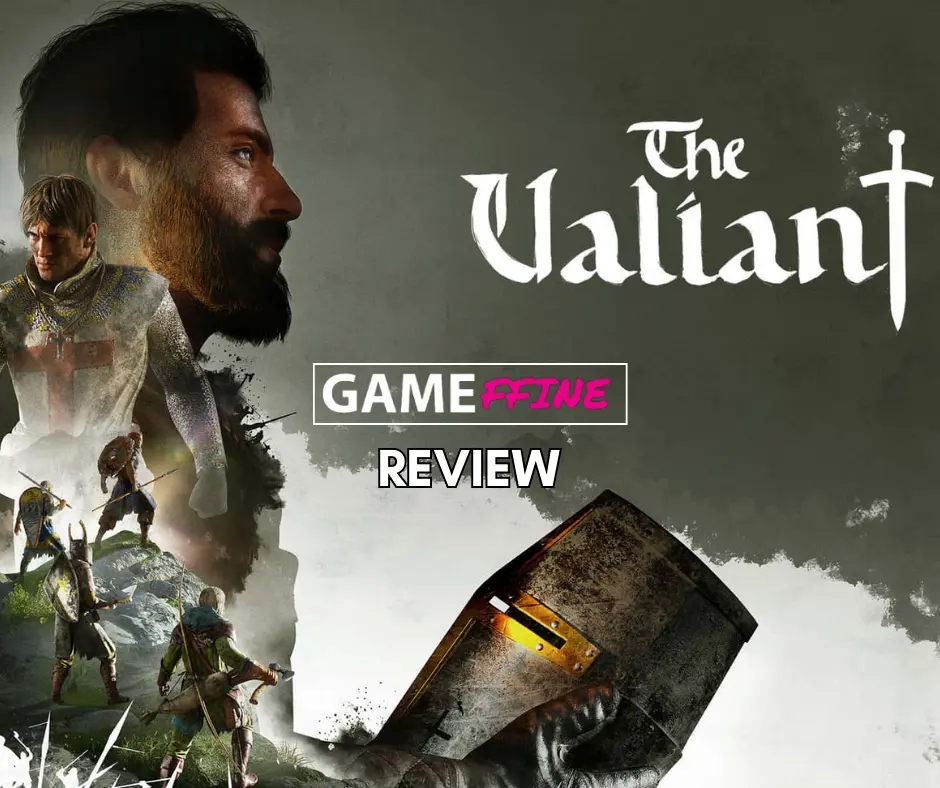The Valiant

The Valiant is a strategy game that tries to make a mark in a genre plagued by waning public interest - and doesn't succeed (for the most part).
Product Brand: KITE Games
Product Currency: USD
Product Price: $24.99
Product In-Stock: InStock
6
2023 has been a great year so far. We’re seeing remakes and remasters of some of the best games of age as well as some of the best games to hit the market. Half of the newer titles I played this year could be competing for the title of Game Of The Year (GOTY)! That in itself is a pretty cool feat. We’re also seeing more console adoption of some of the more conservative genres that generally did not want to leave the comfort of the PC. Yes, I’m talking about strategy games! Company of Heroes 3 got a console port this year (you can read our review about it here) – the first game of the franchise to embrace the console. The path for the release of most strategy games on consoles was paved by the release of Iron Harvest on consoles – a technical marvel at the time of release. The third strategy game I have played on the console is probably The Valiant – another game working on a similar premise as Company of Heroes 3 and Iron Harvest.
The Valiant launched for PC via Steam, GOG, and the Epic Games Store last year on October 19, 2022. The game came out for the PS5 and Xbox Series X on July 11, 2023. The Valiant is a strategy game developed by Kite Games and published by THQ Nordic.
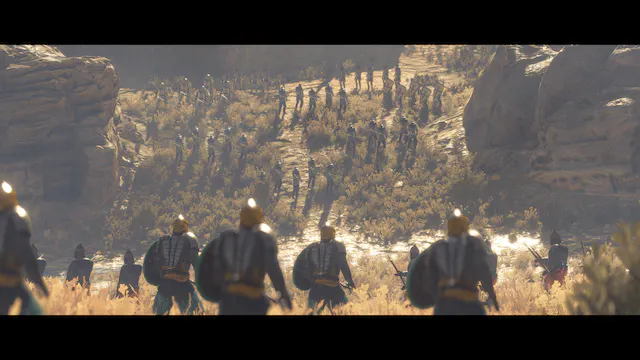
Take Back the Holy Land!
The Valiant was designed with a multiplayer focus in mind, even though the game has both a single-player campaign and a full-fledged skirmish mode. In skirmish mode, players can go 1v1 or 2v2 in battles against the AI. The game does need to add more maps for 2v2 settings – I got to play in only two maps. Also, the addition of a few 3v3 maps definitely goes a long way to ensure players keep coming back to the game. Multiplayer mode suffers from the same issue. I could not start up a multiplayer game because of the lack of players on the platform (maybe PS5 players do not like the genre of strategy?), so that’s definitely a thing too.
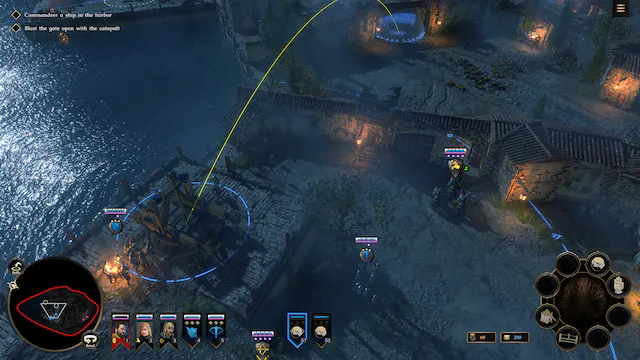
The single-player campaign served little other than being a glorified tutorial for the multiplayer (which the game actually wanted to focus on). I’m seeing this happening in many video games these days, and I personally do not like it. The game tells the story of two knights, Theoderich and Ulrich, during the time period of the Crusades. I did feel that the story lacked depth and didn’t have much to offer other than being a short advertisement for how the game should be played.
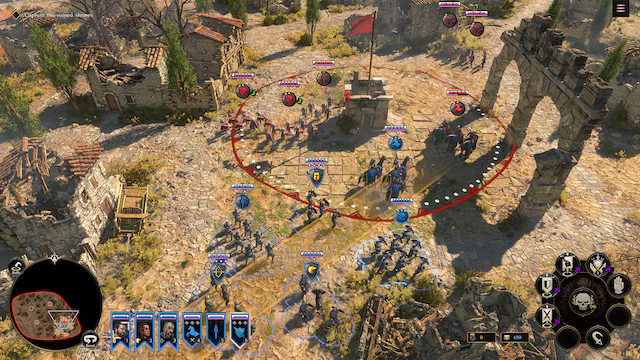
A Tale of Victory or Death
The Valiant puts the player in the driver’s seat during one of the many battles of the Crusades. Your job is to lead your forces to victory against those of the enemy. With the control of gold mines and lumber camps, you will gain precious resources that you need to train troops and maintain your tactical position on the battlefield. However, there are a few points throughout the map that are of strategic importance that need to be controlled for you to win the game. Resource points generate resources every second while holding a majority of victory points making your opponent’s point counter tick down. The job is to ensure your opponent’s victory point counter hits zero while ensuring your own victory point counter stays above zero. If the formula seems over-used and similar to some of the other games in the genre, it is because this is the gameplay formula used for other strategy games as well. It was first started by Dawn of War when they came out on PC, and the formula was captured and made into a proper gameplay mechanic by Company of Heroes.
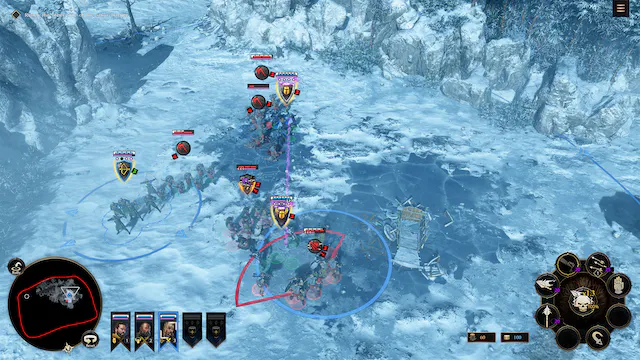
The Valiant offers possibly fewer unit variations than most of its current competitors on the market. I think it was mostly made because the developers decided on a stone-paper-scissors format for deciding unit strengths and weaknesses. For example, cavalrymen are very strong for taking down swordsmen or archers but get hard-countered by spearmen or axe slingers. In my playthroughs, I found archers to be the weakest type – they are very easy to get rid of and pretty difficult to replace. When they are forced to retreat, your entire melee squad gets demolished by the lack of ranged support. Crossbowmen are stronger and less vulnerable to being mowed down by concentrated arrow barrages or cavalry charges, but cost a significantly large amount of resources too. By comparison, swordsmen – the beginning melee unit in the game – the significantly more powerful and play a bigger role in bigger battles. I found the best strategy possible – train a lot of Spearmen and charge directly into battle with them, dealing a lot of damage (and with a few upgrades, even taking out a few units from the enemy squad instantaneously). On the whole, I found some gaps in unit balancing, which should not have been an issue given the entire design philosophy of units was that types were strong or weak against other types. Some unit abilities completely tip the power scale on one side at times, to the point when it feels like opening up Reddit and complaining like a little bi….., oh never mind.
The Valiant’s building system works in a similar manner as Age of Empires (the grand old strategy game that got me – and a lot of other folks – into the genre). Some buildings are used for training soldiers, while others are used for researching upgrades to them. Similar to Company of Heroes and Iron Harvest – they can only be constructed in the starting area for the player. I found the need for towers for defending the main base earlier on very important in Skirmish games – the AI generally likes to spread their forces between capturing points and attacking your base. Also, you can construct fortifications to guard your gold mines and lumber camps from being taken immediately, so that’s that.
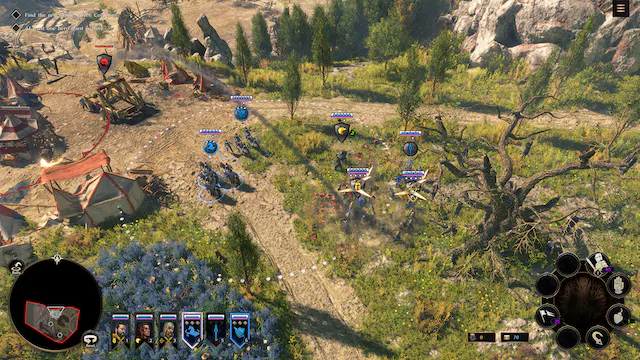
One of the worst parts about the game is possibly the console port itself. This does seem challenging considering that controllers are not the intended targets for playing strategy games. The game does achieve the hotkey combinations and all pretty easily (which is easier to pull off than on the keyboard because only a limited number of combinations need to be memorized). However, this does make playing the game a bit more mechanical at times – something many people from the golden era of turtling in Age of Empires would be disgusted at. You can play without these shortcuts by scrolling back and forth with the analog stick, but it makes the game a lot more difficult than it already is. Selecting units and moving back and forth with the help of the directional pad and the analog sticks do sometimes cause issues too – I had quite a few times when I wanted to select a bunch of units and it did not work. I can’t blame the developers entirely when consoles were a test in murky waters for them, but these things should have been prioritized to be fixed before the official console launch itself.
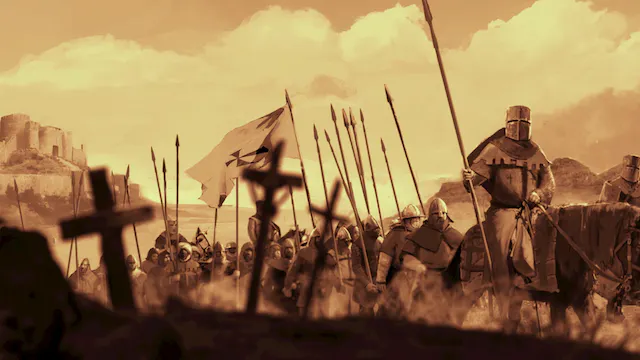
Sounds and Art of Religious Warfare
The game’s main menu soundtrack is jam-packed and was one of the main reasons I kept coming back to play the game even though I found the game to be quite janky and “raw”. It did not have sharp chords to keep the player hooked, yet did a surprisingly good job at making a good first impression. Combat here is more grounded in realism than anything else – you have health bars going down, units dying, and weapons clashing. I do think that the elevated sounds of weapons clashing should be played on a higher note to give the impression that something is happening in the battle – otherwise, it just balls down to seeing a health bar go down and units falling off dead.
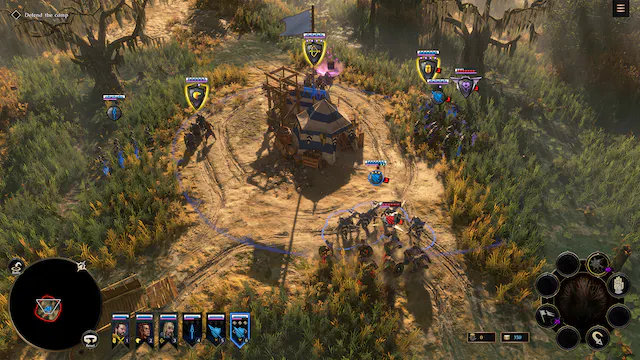
Graphical intensity is definitely decent, though not something to write home about. The units and other models look really well done. The animations are done well too, though it is often shadowed by the fact that battles are generally avoided (at least in the early phases of map control for a game) considering that it takes a while to resolve them. The game has framerate issues on the console and there’s a profound lack of visual options to customize from. Also, the view distance is very limited – something which didn’t feel right.
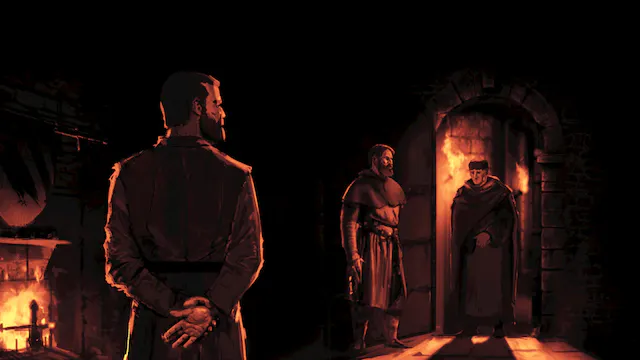
The Siege of Valiants
The Valiant is a strategy game marred with a number of problems. Players have the option of avoiding it or picking it up on a sale if they really want to try it out. The game brings back unhappy memories of Dawn of War 2 and how badly it failed, even though The Valiant does have some positive points to write home in its favor including its historical setting. Nevertheless, this is definitely not the game I’ll recommend if someone asks me for strategy game recommendations at a party.
FINAL RATING: 60/100
The Valiant Review: Crusader's Aura
The Valiant Review: Crusader's AuraThe Good
- 'Moderately' challenging AI
- Proper hotkey mapping on console
- Catchy music and accurate battle sounds
The Bad
- Lack of maps for multiplayer modes
- Minor controller issues
- Bad optimization on console
- Bland storyline
- Lack of unit balancing
